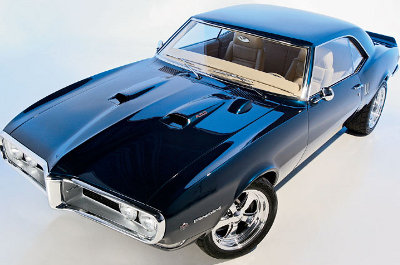Firebird Exhaust Videos
- 1988 Pontiac Firebird Exhaust Systems
- 1989 Pontiac Firebird Exhaust Systems
- 1990 Pontiac Firebird Exhaust Systems
- 1991 Pontiac Firebird Exhaust Systems
- 1992 Pontiac Firebird Exhaust Systems
- 1993 Pontiac Firebird Exhaust Systems
- 1994 Pontiac Firebird Exhaust Systems
- 1995 Pontiac Firebird Exhaust Systems
- 1996 Pontiac Firebird Exhaust Systems
- 1997 Pontiac Firebird Exhaust Systems
- 1998 Pontiac Firebird Exhaust Systems
- 1999 Pontiac Firebird Exhaust Systems
- 2000 Pontiac Firebird Exhaust Systems
- 2001 Pontiac Firebird Exhaust Systems
- 2002 Pontiac Firebird Exhaust Systems
Firebird Exhaust System Tips

Rumors that an all-new Pontiac Firebird would return on scene following GM’s decision to resurrect the Chevrolet Camaro were officially disproven when the brand itself was shut down in 2009 as General Motors restructured itself. Arguably one of the most notable Pontiac models of the last half-century, the Firebird’s 35-year production run came to an end in 2002, with enthusiasts left with little more than its illustrious history to recall.
Firebird Generations
Four generation of Firebirds were built, the last generation spanning from 1993 to 2002. The first generation model was on the market for just three years, but each of the three successive generation Firebirds were sold for at least 10 model years, an awfully long time between updates. In many ways, GM’s lack of proper attention to its sport coupes killed the Firebird and Camaro, with the latter only returning following a concerted effort of rabid Camaro followers to bring it back.
When the 1993 Pontiac Firebird was introduced, a 3.4-liter V-6 was standard and a 5.7-liter V-8 engine was optional. The base engine is paired with a 5-speed manual or 4-speed automatic transmission while the V-8 got a 6-speed manual or optional 4-speed automatic. Rated at 160 horsepower at 4,600 rpm and 200 foot-pounds of torque at 3,600 rpm, the ‘Bird offered the same powerplant options as the Camaro. Indeed, the two cars were essentially the same, though other differences were seen with the nose, hood and tail section as well as with the interior treatment.
Beefy V-8
The optional 5.7-liter V-8 engine is what helped the Firebird battle its rear-wheel-drive nemesis, the Ford Mustang. That engine produces 275 horsepower at 4,200 rpm and 325 foot-pounds of torque at 2,400 rpm, an advantage that mostly offsets the 800 pound edge of the comparable 205-hp Mustang LX with 5.0-liter V-8.
By 1995, a 3.8-liter V-6 joined the Firebird line up and was sold with the smaller V-6 for two years before the older engine was dropped. Rated at 200 horsepower at 5,200 rpm and 225 foot-pounds of torque at 4,000 rpm, this engine assured that every production Firebird has sufficient power although that never stopped enthusiasts from adding superchargers, cold air intakes and performance exhaust systems to their rides.
Firebird Firehawk
By the end of its production run, the beefy V-8 had risen to the next level. That engine, fueled by premium gasoline, carries a 310 horsepower rating at 5,200 rpm and 340 foot-pounds of torque at 4,000 rpm. This 16-valve engine moves fast, rocketing the special edition 2001 Firebird Firehawk from 0 to 60 mph in just 4.8 seconds. SLP Engineering got a hold of those cars installing a functional cold-air inlet along with 17-inch tires and wheels to improve air intake and handling. Optionally, antisway bars, Bilstein shocks and progressive-rated springs could be ordered, to go with the ground effects, custom grille and other special badging Firebird faithful have always loved and continue to admire to this day.
The list of brands offering exhaust parts and systems for the Firebird:








